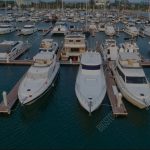 When it comes to owning a boat, ensuring its safety and seaworthiness is of utmost importance. This is where hiring a professional Marine Surveyor 33462 from Suncoast Marine Surveying can make all the difference. A marine surveyor plays a crucial role in evaluating the condition of a vessel, identifying any potential issues or risks, and providing recommendations for maintenance or repairs.
When it comes to owning a boat, ensuring its safety and seaworthiness is of utmost importance. This is where hiring a professional Marine Surveyor 33462 from Suncoast Marine Surveying can make all the difference. A marine surveyor plays a crucial role in evaluating the condition of a vessel, identifying any potential issues or risks, and providing recommendations for maintenance or repairs.
One key aspect of a comprehensive marine survey is the inspection of interior and cabin areas. These spaces are not only important for the comfort and functionality of the boat but also serve as critical components of its overall structural integrity. A thorough inspection of these areas can reveal hidden problems that could pose a danger to the vessel and its passengers if left unchecked.
To ensure a comprehensive inspection of interior and cabin areas, there are several key steps that a marine surveyor must follow:
1. Conduct a visual inspection: The first step in inspecting interior and cabin areas is to visually assess the condition of the space. Look for signs of water intrusion, mold, mildew, corrosion, or other damage that could indicate underlying issues. Pay special attention to areas that are prone to moisture, such as around windows, hatches, and plumbing fixtures.
2. Check for proper ventilation: Proper ventilation is essential to prevent moisture buildup and mold growth in interior spaces. Ensure that all vents and fans are functioning correctly and that there are no obstructions blocking airflow. Inadequate ventilation can lead to a host of problems, including rotting wood, rusted metal, and foul odors.
3. Inspect the electrical system: Electrical systems are a common source of problems on boats, so it’s important to thoroughly check wiring, outlets, switches, and appliances in interior and cabin areas. Look for frayed wires, loose connections, and other signs of wear or damage that could pose a fire hazard.
4. Evaluate the plumbing system: Leaks in the plumbing system can cause significant damage to a boat’s interior structure and furnishings. Check all pipes, hoses, fittings, and fixtures for signs of leaks or corrosion. Test faucets, toilets, showers, and other plumbing fixtures to ensure they are in good working order.
5. Assess the condition of furniture and fixtures: Interior furnishings such as sofas, beds, tables, and cabinets should be inspected for signs of wear, damage, or deterioration. Check for loose or broken hardware, water stains, mold growth, and other issues that could affect the safety and usability of the space.
6. Test safety equipment: Interior and cabin areas should be equipped with essential safety gear such as fire extinguishers, smoke detectors, carbon monoxide alarms, and emergency lighting. Make sure that all safety equipment is present, functional, and up to date with current regulations.
7. Document findings and recommendations: After completing the inspection, the marine surveyor should document their findings and provide recommendations for any necessary repairs or maintenance. A comprehensive report will detail the condition of interior and cabin areas, identify any deficiencies or hazards, and outline steps that need to be taken to address them.
By following these steps and enlisting the expertise of a qualified Marine Surveyor 33462 from Suncoast Marine Surveying, boat owners can rest assured that their vessels are in good hands. A thorough inspection of interior and cabin areas will help identify potential issues before they escalate into costly repairs or safety hazards. With proper care and maintenance, boats can remain safe, seaworthy, and enjoyable for years to come.r


